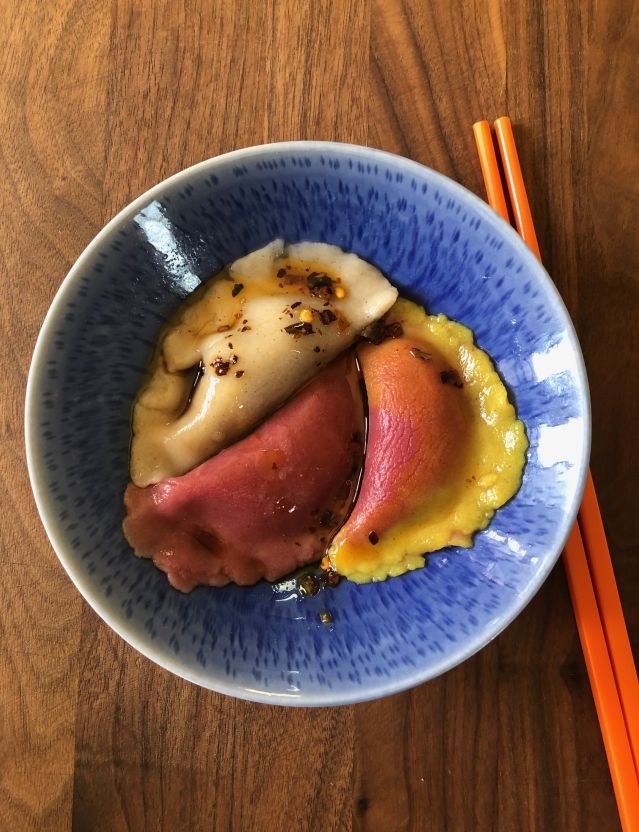
“Why are you making gluten-free dumpling wrappers?” my husband said. Because I’d had a conversation with our neighbor about cooking for her super allergic son. It was expensive, particularly when it came to the various flours and starches involved in making baked goods and and doughy delights. Even if you shop the bulk bins at a good health food market, it can be pricey and complicated. Years ago, I went multiple rounds to blend flours and xanthan gum for a gluten-free dumpling wrapper recipe. It performed very well but I’ve been wondering if the new generation of premixed gluten-free flour blends would make dumpling wrappers easier for folks.
I’d used Bob’s Red Mill 1:1 gluten free baking flour for fruitcake and the green tea “pandan” coconut waffles in Vietnamese Food Any Day. The rice-based flour blend worked well. But dumplings are a different animal and Bob’s (“BRM”) label confines the gluten-free flour usage to baked goods.
Well, it never hurts to try, right? So I did. And my curiosity led to a lot of fun and discoveries plus this no-brainer gluten-free dumpling wrapper recipe. I hope it will bring out the artist in you!
The Functional Verdict
This gluten-free dumpling wrapper dough is as easy as my basic dumpling dough in the Asian Dumplings cookbook. The gluten-free texture is tender and supple but know that it is slightly mushy, though you can minimize that by carefully hydrating the dough. I’d proudly present this latest gluten-free dumpling iteration alongside my regular wheat ones for fun comparison. Of course, I’d only serve the gluten-free ones if diners have strict dietary needs.
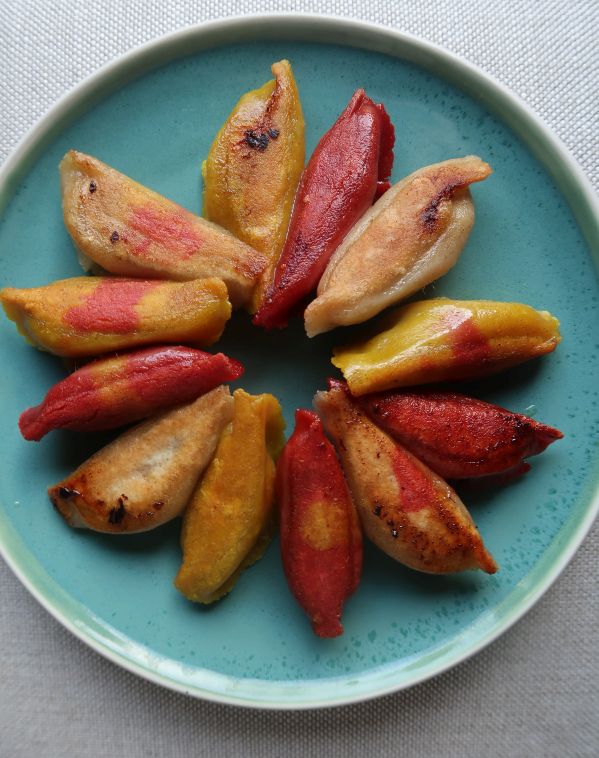
Regardless, you can play with this dough to create artful dumplings worthy of an Anthropologie clothing store photo. Poached at the top, they're lovely. Pan-fried into pot stickers, they lose a bit of their good looks but they have crisp bottoms.
Choice of Flour for Gluten-Free Dumplings
There are other blends of gluten-free flour but I like Bob’s Red Mill because it’s relatively affordable and widely available. If you have one that you like, try it out and see.
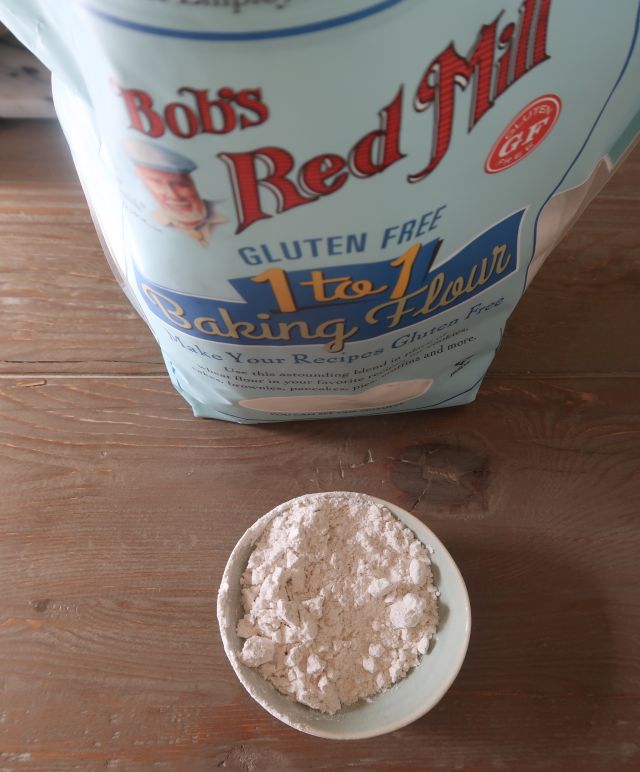
Hydration Matters
My usual ratio of flour to water is 10 ounces of all-purpose unbleached flour to ¾ cup just-boiled water. The super hot water cooks the starch to make the dough pliant and easier to roll out into individual wrappers. To that end, I tinkered with half batches of 5 ounces of BRM 1:1 gluten-free flour and 6 tablespoons of just-boiled water.
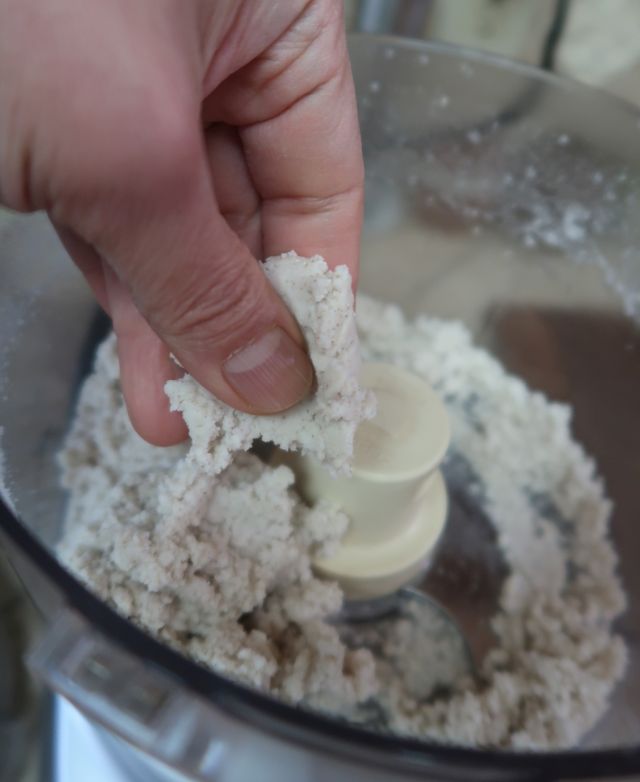
As with regular A/P wheat flour, working the water into the flour by hand hydrated the dough slower. I ended up adding too much water on my first try. Subsequently, I went to my default approach of using the food processor. The dough came together well as pebbly round balls which I then gathered up and kneaded. You can’t overwork gluten-free dumpling dough because there’s no gluten!
I discovered that I consistently need to use a tiny MORE water than the regular 6 tablespoons. Like with regular A/P flour, resting the dough in a zip-top bag helped to settle the dough, though a rest of 5 to 10 minutes was all that was needed.
Make ahead note: Once the dough is made, it kept beautifully in the fridge overnight.
Coloring Gluten-Free Dough
Then I got bold and tinted the dough with turmeric and the beet cooking liquid from steaming beets in the Instant Pot.
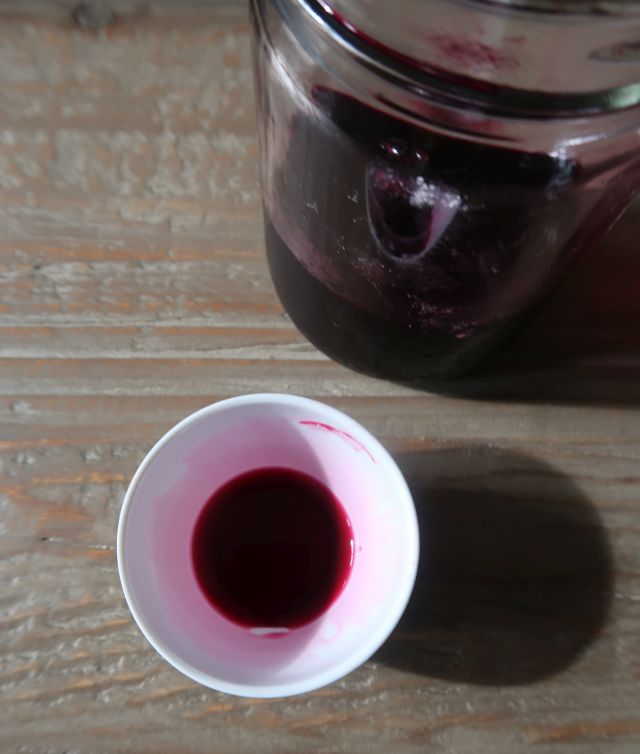
The dough was a firmer with the beet liquid and I kept having to wet my hands and knead the dough, which showed little fine cracks when I worked it. The amount I ended up using was closer to 7 tablespoons per 5 ounces of flour. The point is to gauge the dough. It should not feel like squeezing a stress ball.
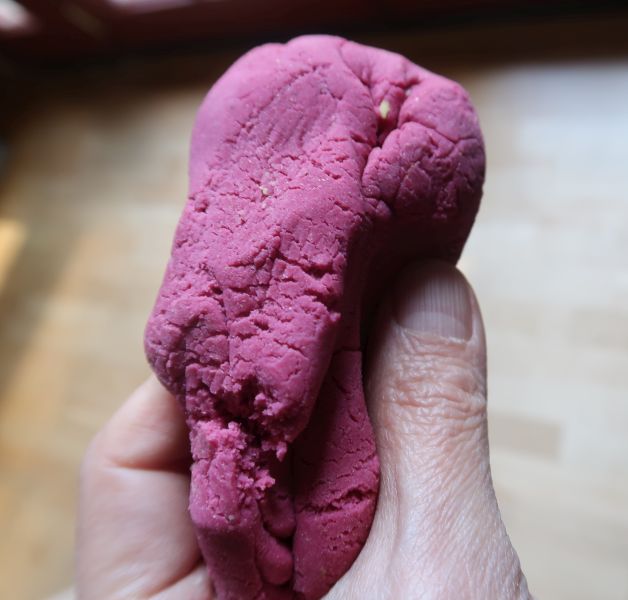
The most fun part of coloring the dough and using gluten-free dumpling dough is this -- you can combine colors to create arty dumpling wrappers. The dough is texturally like Play-Doh and without gluten to fight your manipulations, you can smush different dough together to create color blends and random patterns. Smear on some color if you like.
Make a hot dog, shape it into a log and cut for dumpling wrappers. Encase a ball of one color in one of another color.
Gluten-Free Dumpling Wrapper Rolling Tips
I use the same technique as for regular wrappers. However, you don’t have to flour the dough ends unless they’re super sticky. There’s little extra flour needed if the dough hydrated correctly.
This dough is firmish. You’ll be tired (and possibly hate me) if you roll it out all by hand. Save your energy by using a lightweight tortilla press like this aluminum one (cast iron yields too much pressure on delicate dumpling wrappers).
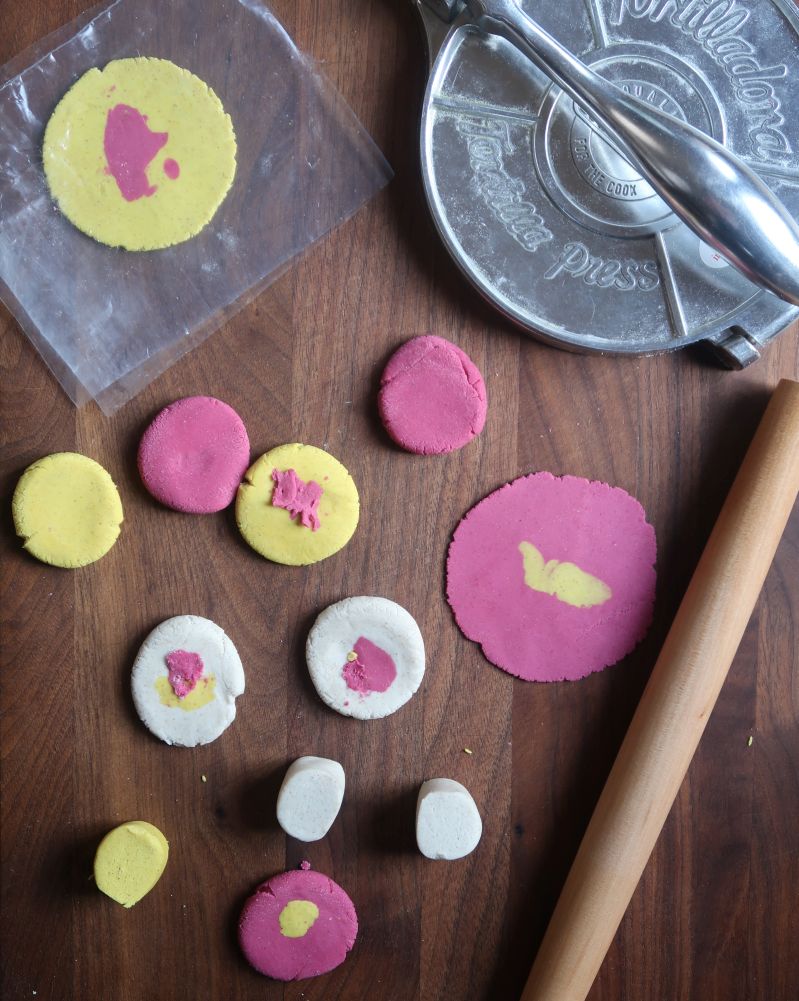
Smack the dough into discs, then press in the press into a ⅛-inch thick round. Finish by rolling with a dowel-style roller. Apply my standard rolling technique and try to create a thicker middle.
Do your best to make wrappers that are 3 ¼ inches wide. You cannot stretch these like regular wheat wrappers.
If any big cracks or tears appear, press the skin together. It’s forgiving because it’s gluten free! The skins dry out easily so work in small batches and keep things covered. Cracks due to colored dough smashing together are negligible.
Gluten-Free Dumpling Shaping Tips
When I over hydrated the dough (round 1), I could make some pretty shapes but then the dumplings cooked to an overly mushy state. Subsequently, I stuck with simple shapes like the half moon, pea pod and simple pleated crescent. See this page for those dumpling shaping videos.
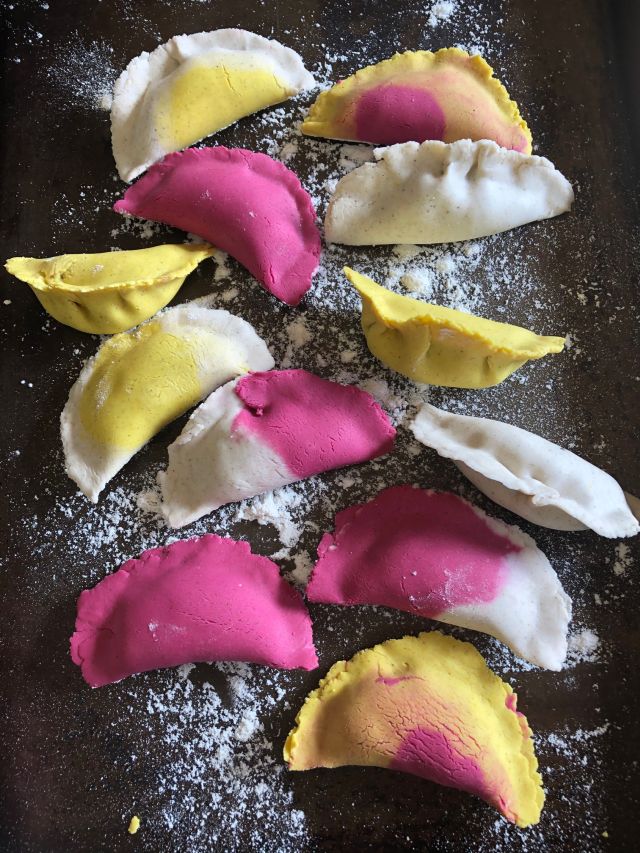
You cannot do a fancy shape like what’s used for bao or soup dumplings.
This gluten-free dumpling wrapper recipe freezes well. Just as described in this dumpling freezing tips post, freeze the filled and shaped dumplings. Partially thaw the gluten-free dumplings before cooking. (I thawed while a pot of water came to a boil!)
How Much Filling to Use
Because gluten-free dumplings lack stretch, use 2 to 2 ½ teaspoons of filling (instead of the usual 1 tablespoon of filling). That means for each 5 ounce cup of flour, you can make 16 dumplings and will need ⅔ to ¾ cup of filling. My standard dumpling filling recipes make 2 cups for wheat flour wrappers. Doubling the dough recipe allows you to make 32 dumplings with leftover filling for a half batch.
Cooking Options and Serving Tips
I pan-fried, steamed, and poached dumplings encased in this gluten-free dough and they were all great. Use a little less oil for pan-frying because the rice just doesn’t absorb as much as wheat does. Rice will fry up nice and crisp on the bottom, though browning is NOT dark as with wheat flour. Cook as usual and feel for softness and look for a bit of translucency. The wrapper will look plump and have a sheen to it when cooked.
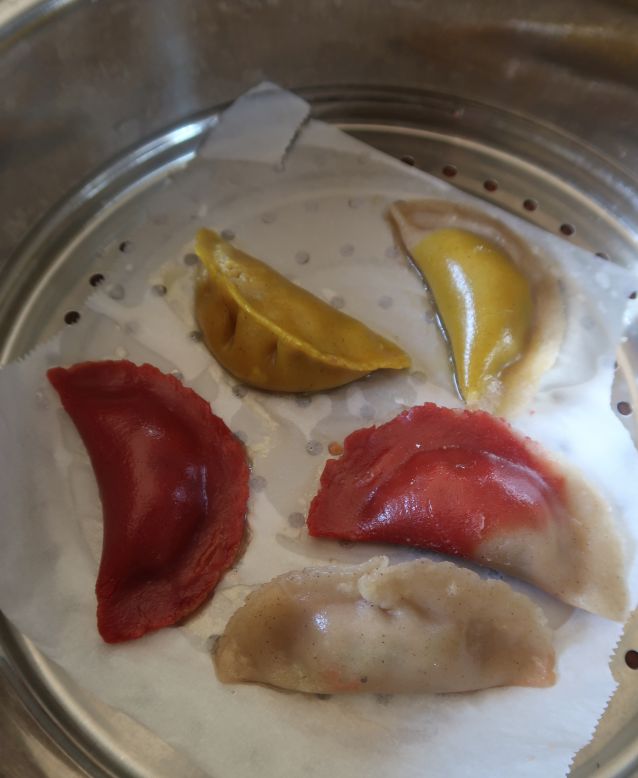
Once cooked, these gluten-free dumplings are kind of sticky and soft. Let them cool for a few minutes before eating. They will firm up and have a nice chew without sticking to your teeth.
That’s all my intel after 2 days of playing with this dough. Now it’s your turn to make some! Have lots of dumpling fun.
Dumpling Filling Ideas
See the first chapter of my book Asian Dumplings and try these at this site. To make them gluten-free, check ingredients and use wheat-free versions as needed. A post on gluten-free soy sauces is here.
- Chanterelle, shrimp and chicken dumplings
- Roasted kabocha and vegetable dumplings
- Korean shrimp dumplings
- Sichuan crescent dumplings
- Pork and pumpkin pot stickers
- Tempeh and scallion pot stickers
- How to create your own Asian dumpling filling on the fly!
Gluten-Free Dumpling Wrapper
Ingredients
- 5 ounces (1 cup) Bob’s Red Mill 1:1 Baking Flour
- About 6 tablespoons just-boiled water (see Note)
Instructions
- Put the flour in a regular size food processor. With the machine running, and feed tube removed, add the water in a steady stream. Let the machine keep going after all the water has been added, until small pebbly bits have formed. It should feel soft and stick together easily when pinched.
- Alternatively, make the dough by hand. Put a bowl atop a kitchen towel to prevent it from slipping while you work. Put the flour in the bowl and make a well in the center. Use a wooden spoon or bamboo rice paddle to stir the flour while adding the water in a steady stream. Aim to evenly moisten the flour. It is okay to pause to stir or add water. When all the water has been added, you will have lots of lumpy bits. Knead the dough in the bowl to bring all the lumps into one mass; if the dough does not come together easily, add water by the teaspoon.
- Regardless of mixing method, transfer the dough and all bits to a work surface. Gather and knead into a ball. Place the dough in a zip-top plastic bag and seal tightly closed, expelling excess air. Set aside to rest at room temperature for 5 to 10 minutes before using. Or, refrigerate overnight and return to room temperature before using.













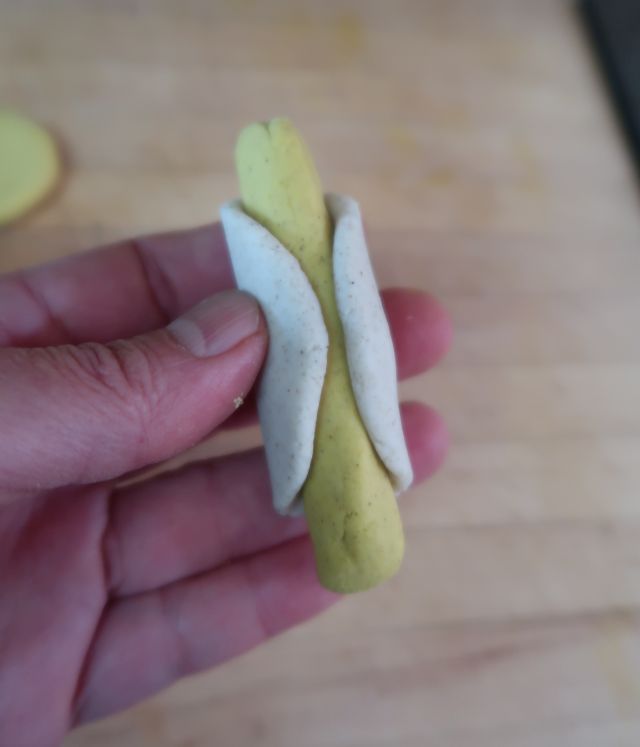
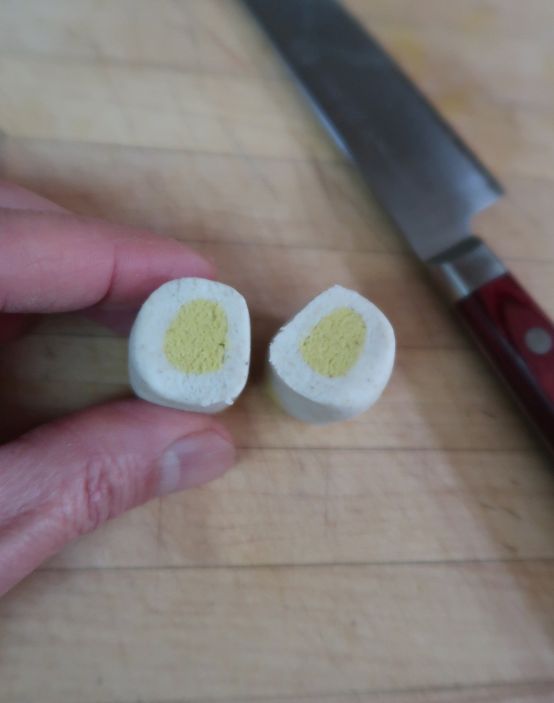




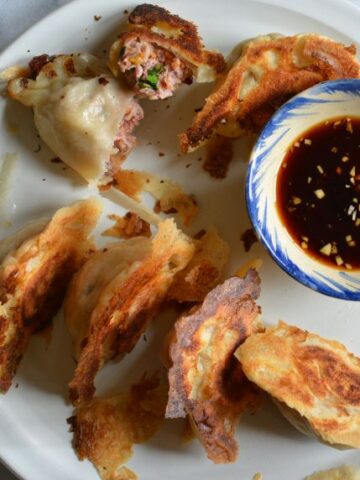
KJ says
I tried this recipe with King Arthur GF Measure for Measure flour. It was a disaster. the dough kept breaking and it just wasn't as tasty as your other recipe. I love your other recipe and will keep using it and not this one.
Andrea Nguyen says
I made this dough with Bob's Red Mill's 1:1 GF Baking Flour, as picture in the photo in the post. Sorry you off roaded with King Arthur's Measure for Measure, which I just noticed at Whole Foods. When you have Bob's Red Mill available try it. Or, blend the flours like other recipe.
Vi says
Can I use those dumpling wrapper for shumai too?
Andrea Nguyen says
Yes, but the dumplings will be thick. Try making the wrappers as thin as you can.
SB says
Please mention that this was in a shared facility on shared equipment and not gluten free. It's inappropriate to serve to Celiacs and gluten intolerant a.
Andrea Nguyen says
Do you mean that the people that use this recipe should do this? I would imagine that the folks for whom this recipe is helpful would maintain homes that are safe for Celiacs, if that's what they're suffering from. As for product labeling, that would be up to the consumer to read the labels carefully. Again, someone who has a serious situation takes care to read food ingredient labels.
Kristen says
Would you consider creating a recipe for something like a steamed pork bun or boa bun? I haven't had much luck converting a recipe to gluten free
Andrea Nguyen says
It's a tough one but I'll put it on my request list. Thanks!
Mari says
I'm very sensitive to both wheat and tapioca. Tapioca is included in the Bob's Red Mill mix. Do you have any other suggestions for a different flour or a different mix of flours?
Andrea Nguyen says
Try this recipe, which has you do it from scratch: https://www.vietworldkitchen.com/blog/2015/01/gluten-free-potstickers-recipe.html